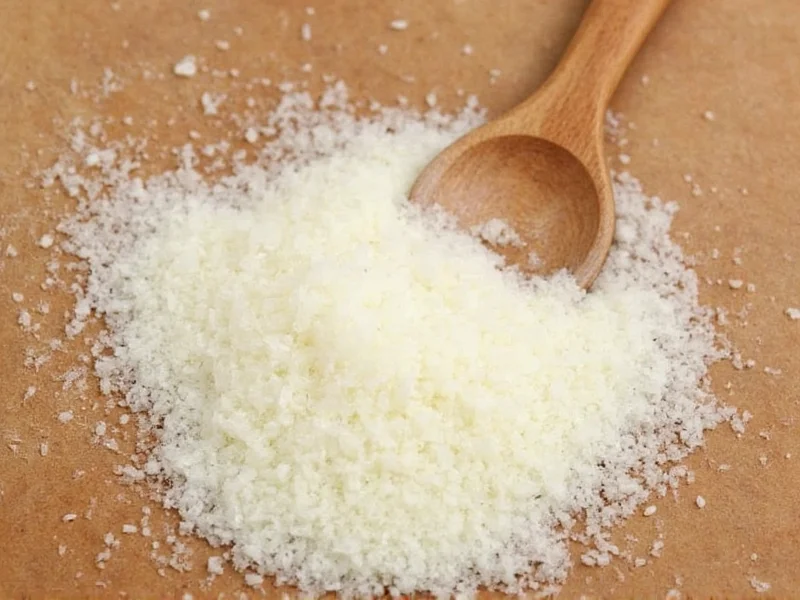Understanding the relationship between granulated onion and onion powder solves common kitchen dilemmas when following recipes. Both products come from dehydrated onions but serve different culinary purposes based on their physical properties. The key distinction lies in their particle size, which directly impacts flavor release, solubility, and measurement accuracy.
What Are Granulated Onion and Onion Powder?
Granulated onion consists of small, uniform particles roughly the size of coarse sand. Manufacturers produce it by dehydrating onions and passing them through specific mesh screens to achieve consistent sizing. This form dissolves slowly in liquids, providing gradual flavor release ideal for longer cooking processes.
Onion powder represents the most finely ground form of dehydrated onion, resembling flour in texture. The increased surface area allows for immediate flavor dispersion in dishes. Professional food manufacturers create onion powder by grinding dehydrated onions to a particle size typically under 200 microns.
Key Differences Affecting Substitution
Three critical factors determine how these ingredients behave differently in recipes:
| Characteristic | Granulated Onion | Onion Powder |
|---|---|---|
| Particle Size | 0.5-1.5mm (fine sand) | <0.2mm (flour-like) |
| Flavor Concentration | Moderate | High (30-40% stronger) |
| Dissolution Time | 3-5 minutes in liquid | Instant |
| Best Uses | Slow-cooked dishes, rubs | Dressings, quick sauces, dry mixes |
Precise Conversion Guidelines
Accurate substitution requires understanding the volume-to-flavor relationship. The standard conversion follows a 3:2 ratio:
- 3 parts granulated onion = 2 parts onion powder
- 1 tablespoon granulated onion = 1.5 teaspoons onion powder
- 1 teaspoon onion powder = 2 teaspoons granulated onion
This ratio accounts for the increased surface area of the powder, which releases more flavor compounds per unit volume. When converting recipes, always measure both forms using proper spoon techniques—scoop and level for accuracy.
Practical Substitution Scenarios
Certain cooking situations demand specific considerations when swapping between these ingredients:
Dry Rubs and Seasoning Blends
Granulated onion works better in dry rubs because its texture helps the mixture adhere to proteins. If substituting powder, reduce the amount by one-third and consider adding breadcrumbs or cornstarch to maintain texture.
Sauces and Dressings
Onion powder dissolves instantly in liquids, making it ideal for vinaigrettes and quick sauces. When using granulated onion instead, allow at least 10 minutes of simmering time for proper dissolution. For cold dressings, always choose powder to prevent graininess.
Baking Applications
In breads and savory baked goods, granulated onion provides pleasant texture contrast. Substituting powder requires reducing liquid content by 1-2 teaspoons per tablespoon of powder to compensate for its finer texture absorbing more moisture.
Storage and Shelf Life Considerations
Both forms maintain quality for 12-18 months when stored properly, but their different textures affect longevity:
- Store in airtight containers away from light and moisture
- Granulated onion may clump less than powder due to larger particle size
- Onion powder loses potency faster due to greater surface area exposure
- Freezing extends shelf life to 24 months for both forms
Check for freshness by rubbing a small amount between your fingers. Fresh product should release immediate onion aroma. Discard if the scent has diminished or turned musty.
Homemade Conversion Techniques
When commercial products aren't available, you can convert between forms at home:
- Granulated to powder: Process in a spice grinder for 30-60 seconds until uniformly fine
- Powder to granulated: Not practically possible at home due to required industrial screening
- From fresh onions: Dehydrate sliced onions at 140°F for 6-8 hours, then grind to desired consistency
For best results when making your own, use yellow onions which offer balanced sweetness and pungency. Avoid adding anti-caking agents as they alter flavor profiles in homemade versions.
Recipe Adjustment Tips
Successful substitution requires more than simple measurement conversion. Consider these professional adjustments:
- When replacing granulated with powder in slow-cooked dishes, add the powder during the last 15 minutes of cooking to preserve volatile flavor compounds
- In spice blends, reduce salt by 10% when using powder since its stronger flavor can amplify salt perception
- For meatloaf or burgers, use granulated onion for better texture distribution
- When making onion soup, powder provides quicker flavor integration for weeknight meals











 浙公网安备
33010002000092号
浙公网安备
33010002000092号 浙B2-20120091-4
浙B2-20120091-4